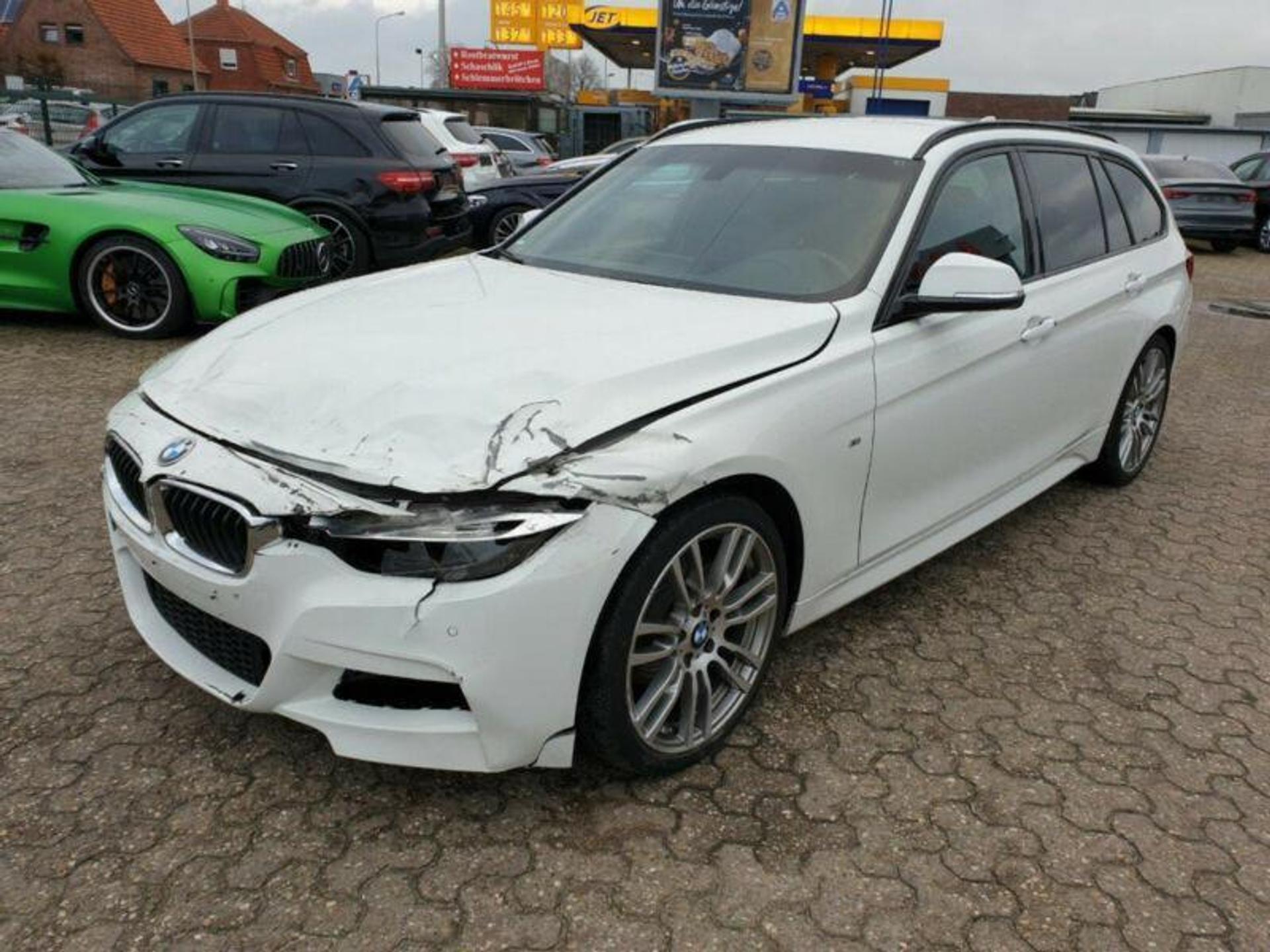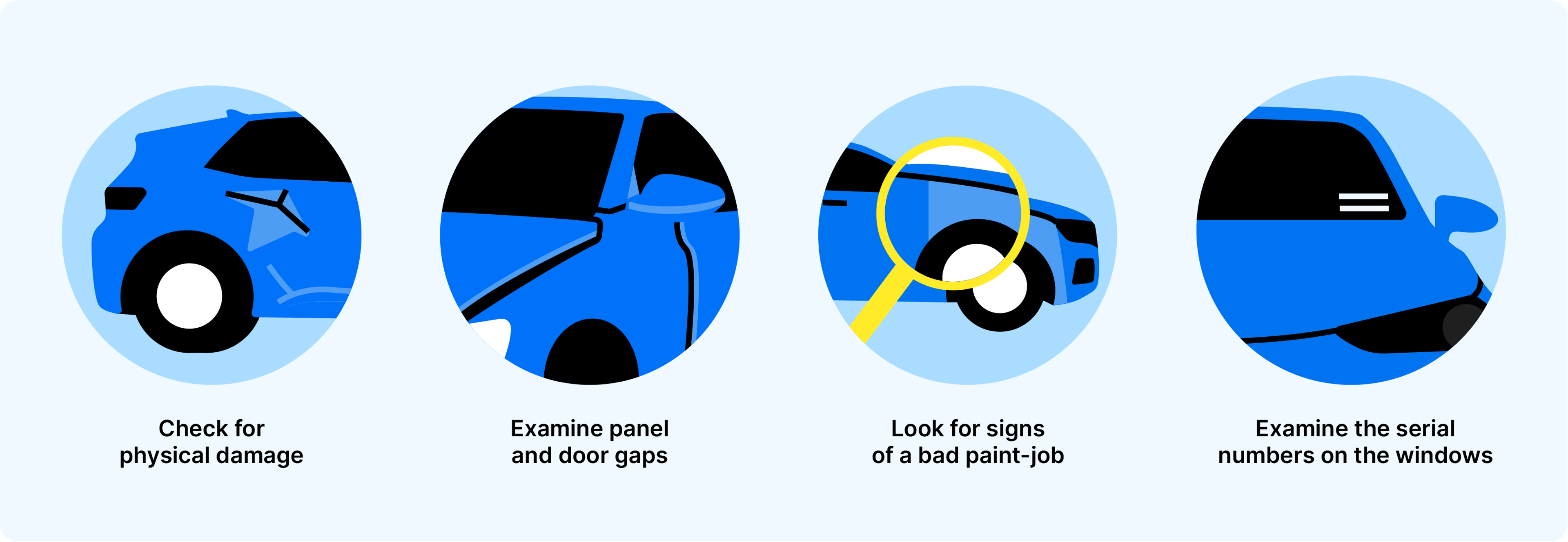
No one wants to buy a car that's been in an accident and deal with the effects of a damaged vehicle. These include lower resale value, reliability problems, and a higher risk of severe injuries in future accidents.
With so many compelling reasons to check if a car has been in an accident, these tips will guide you through the necessary steps to determine if a vehicle has been involved in an accident or has undergone extensive repairs.

Looks can be deceiving!
Don't risk your safety - check it with carVertical first
Get a carVertical vehicle history report to check for damages
If you're not willing to jump through all the seller-prepared barriers designed to hide evidence of a car crash, take advantage of the carVertical vehicle history report.
It features a damage report and advanced AI damage detection capabilities, allowing you to check if a car has been in an accident and reveal its actual condition.
How to read the accident info on a vehicle history report?
The Damage section of the carVertical history report includes information about past damage events, such as accidents. This will help you determine what was damaged and how badly.
When checking a car's accident history, realistically assess the impact. Consider damage groups and estimated repair costs, as these factors will provide insight into the car's condition and potential future issues.

The vehicle history report may also depict how the car looked after an accident:

Look for easy to detect visual signs of an accident
Damage left by a more severe accident profoundly impacts the vehicle's behavior in critical situations. Non-functioning airbags or damaged vehicle structure can turn a car into a dangerous cardboard box. Therefore, use the following tips to confirm whether the vehicle has been in an accident.

1. Check for physical damage
Perform a car damage check on both ends of the vehicle. Move your hands along the car and check for dents, cracks, and other damage.
Examine the wheels while inspecting the vehicle. A different tire or a more significant mark on the alloy wheel could be a sign. It’s also crucial to pay attention to the tire’s issue date. They can’t possibly be older than the vehicle.
2. Examine the panels and door gaps
Uneven gaps between doors and the body panels next to them usually mean two things – poor build quality or the clue that a car has been in a crash.
At first, examine the spaces between the bonnet and the body panel next to it. If you notice misalignment between the doors and the body panels or between the trunk and the rear wings, it’s possible the vehicle was repaired. The hood, doors, and trunk should be even with the other panels when closed. If they aren’t, that’s also a bad sign.
3. Look for signs of a bad paint-job
Inspect the condition of the vehicle’s paintwork in a clean, dry environment, preferably in broad daylight. Look for differences in paint color across different body parts. Avoid distractions from the seller and focus on checking for evidence of car damage.
It’s worth inspecting the paint thickness on the sills and looking at the center pillars when open. In this area, there should be no paint residue. Also, use a paint thickness measuring instrument to determine which area of the car was painted:
- A vehicle with no accidents and original paintwork should have a reading of 80 - 120 microns.
- If a body part has been painted, the measuring instrument will read 150 - 260 microns.
- Anything greater than 300 microns should be regarded as a cause for concern.
4. Examine the serial numbers on the windows
The serial numbers on the car windows are one of the best indicators to check if the car has been in an accident. If one does not match the other, ask follow-up questions to learn more about what happened.
It's worth noting that the front windshield is the most commonly replaced item. It's not because the car was involved in a collision but for other reasons. Stone damage, for example, is the main reason the front windshield is changed.
Test drive
The test drive is an important part of checking if a car has been in an accident, because it helps find the shortcomings and get an overall impression of how it was maintained. Here are some of the things you should look at during those test drives:
- Most modern vehicles have automatic gearboxes, which can operate in different modes: Eco, Normal or Sport. Try them out and monitor changes in gearbox and engine performance.
- Step on the gas! Some issues are invisible on a casual drive, but acceleration and speed can make them obvious.
- Vehicles have a variety of controls for the operation of additional equipment. Make use of all of them and make sure they all work correctly.
- Turn the radio off and keep an ear out for strange sounds coming from the suspension or engine compartment.
- When the vehicle is stationary, turn the steering wheel to the left or right side and listen for sound coming from the engine compartment. Noise or difficulty may indicate deeper problems with the engine, suspension, or steering system.
- Check if all electronic devices work – air-conditioning system, parking-aids, navigation system, blind-spot warning system. Everything should work flawlessly.
Seek expert assistance
If you need more clarification on any findings from your car inspection, seek expert assistance to reach the final verdict, especially if it's a modern, feature-rich vehicle.
Skilled professionals know precisely what to look for when inspecting a car. They can spot shoddy repair work, check for any previous interference with the vehicle's electronics, and examine all the essential details. While hiring an expert may cost you, it's a much more reliable option than relying on free advice from friends who may only guess whether the car has been in an accident.

Check your registration number
Avoid costly problems by checking a vehicle's history. Get a report instantly!
Frequently asked questions

Article by
Aivaras Grigelevičius
Aivaras has been excited about cars since he was a little kid. Later, this passion for drivable objects (and everything that surrounds them) grew into work as an automotive journalist. Since then, Aivaras has written for several different magazines, covering anything with an accelerator pedal. He has a soft spot for cars with an Alfa Romeo badge.
